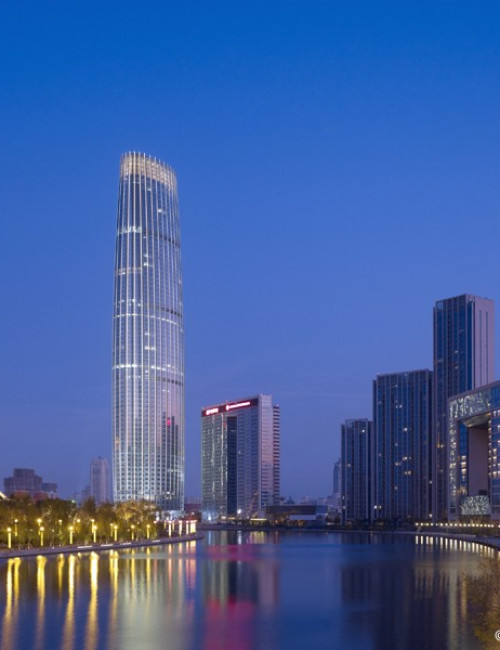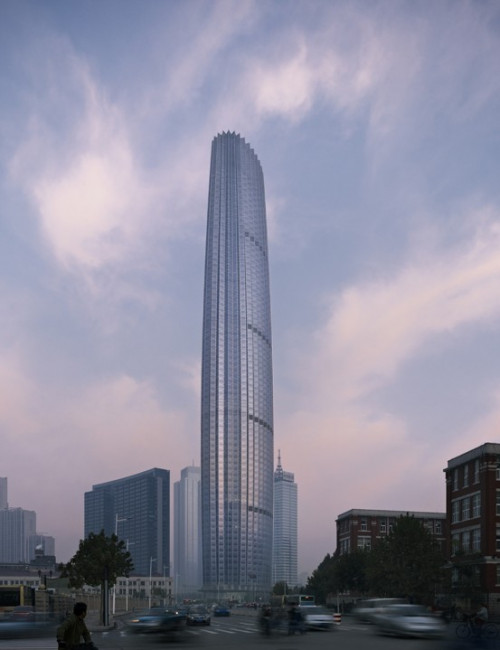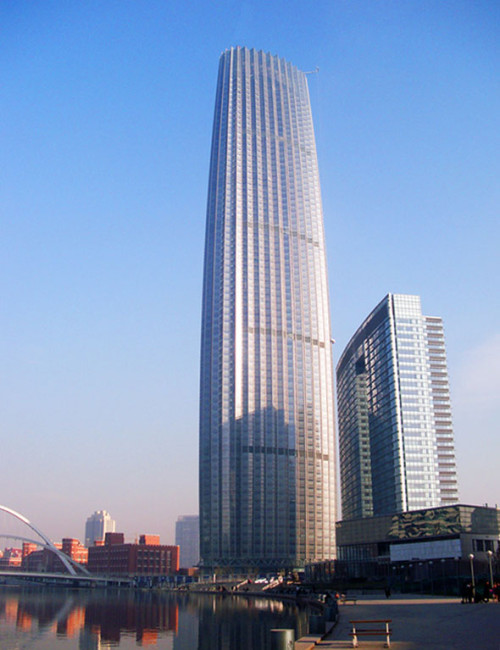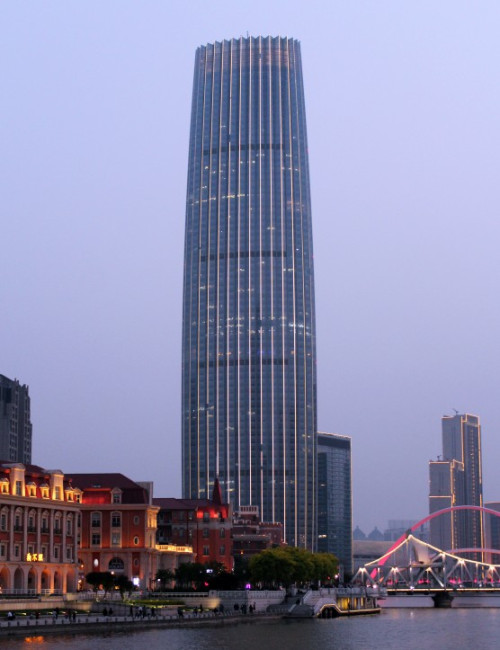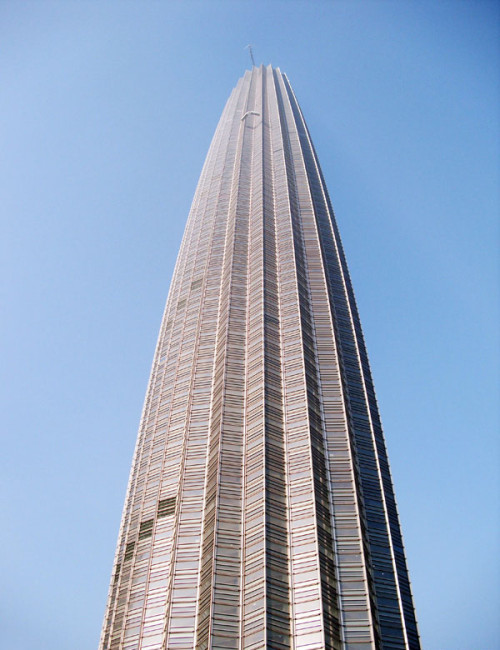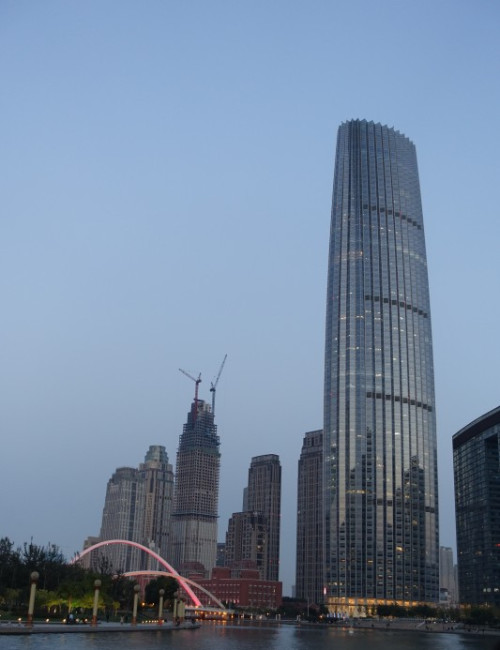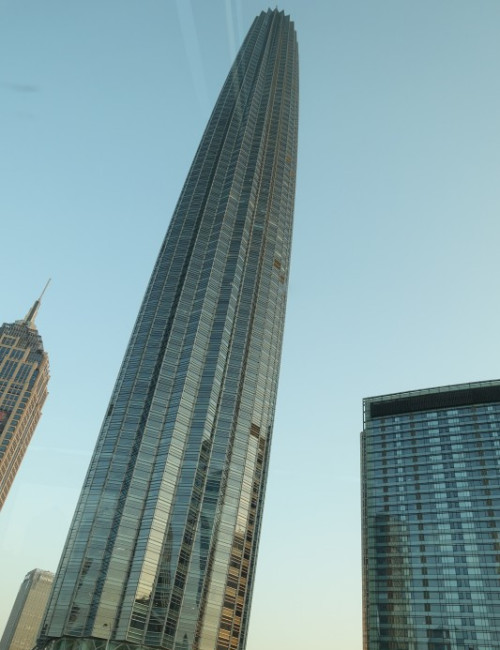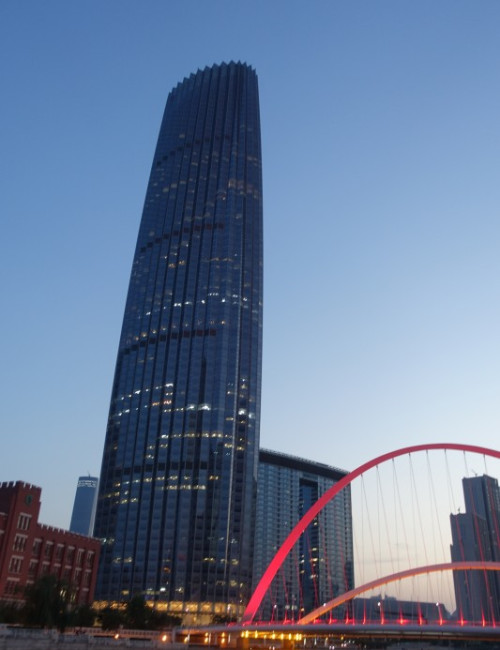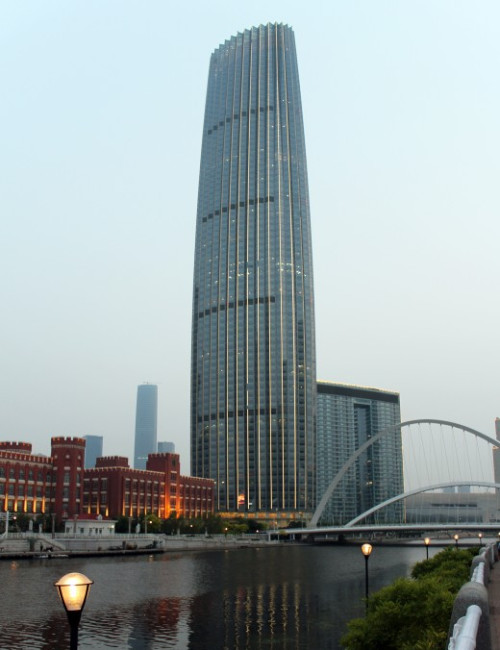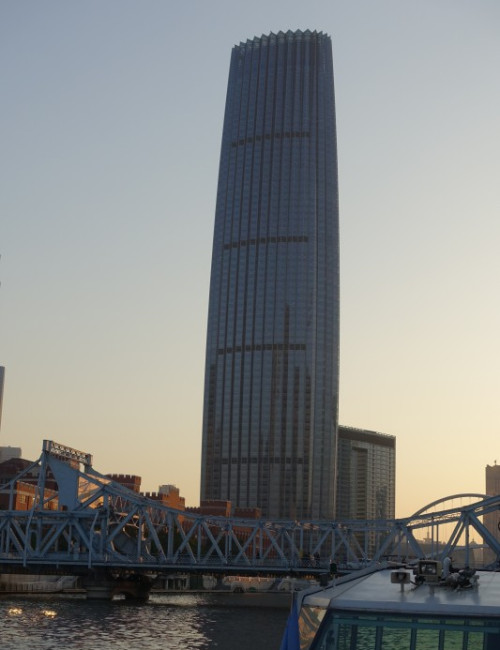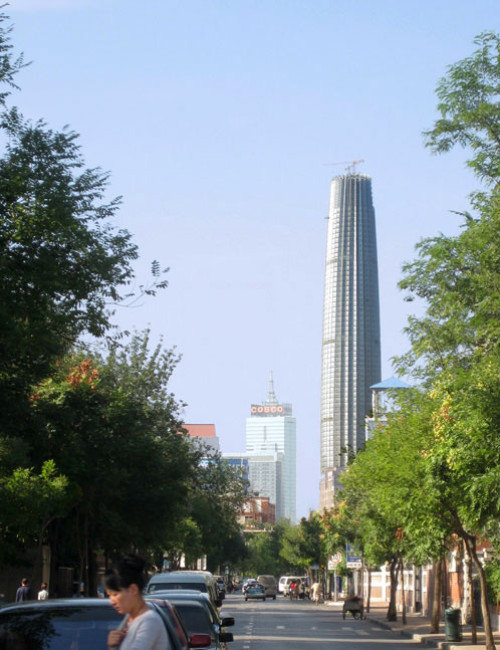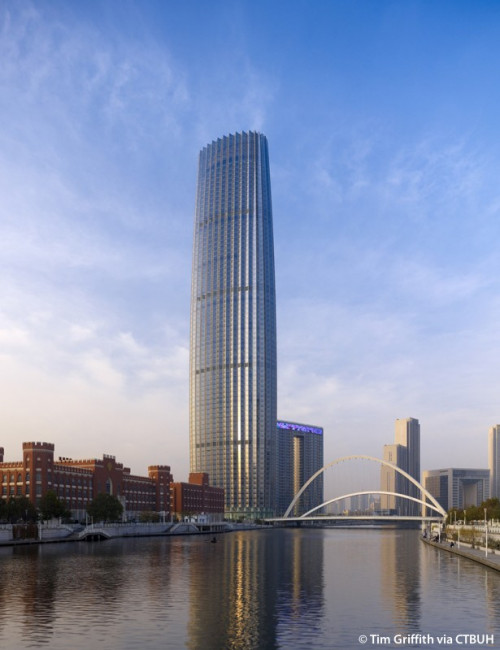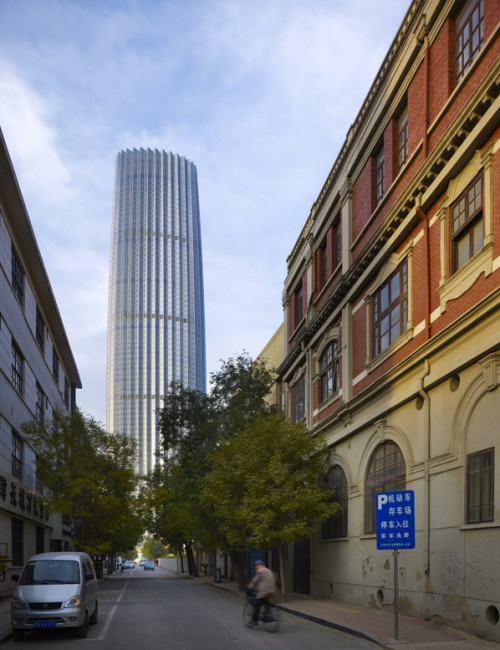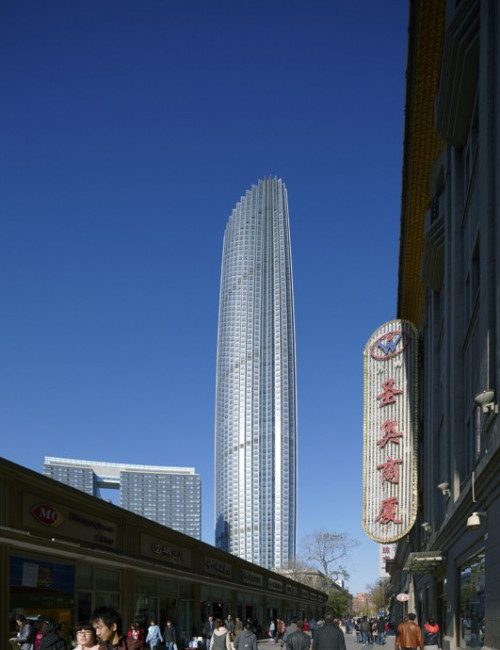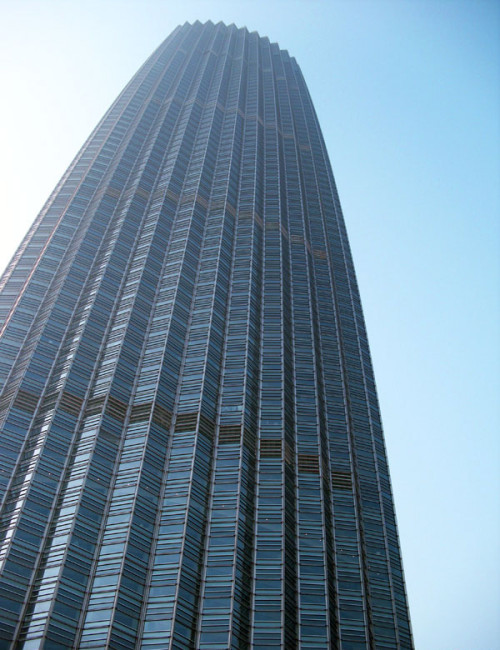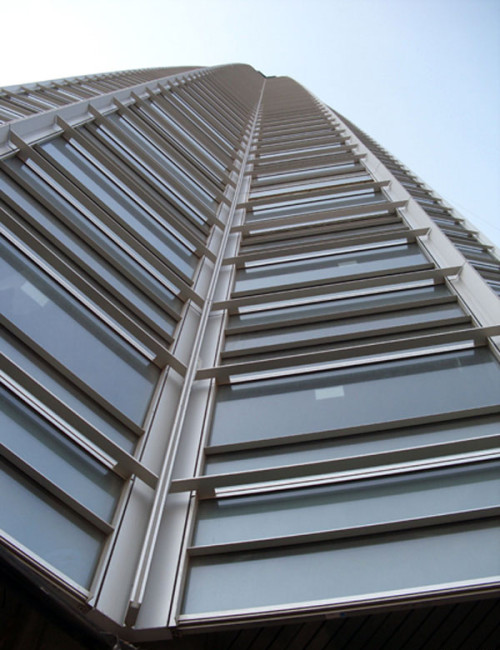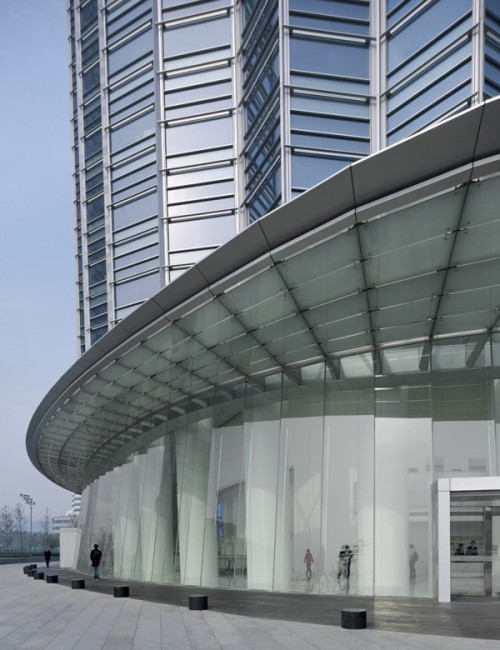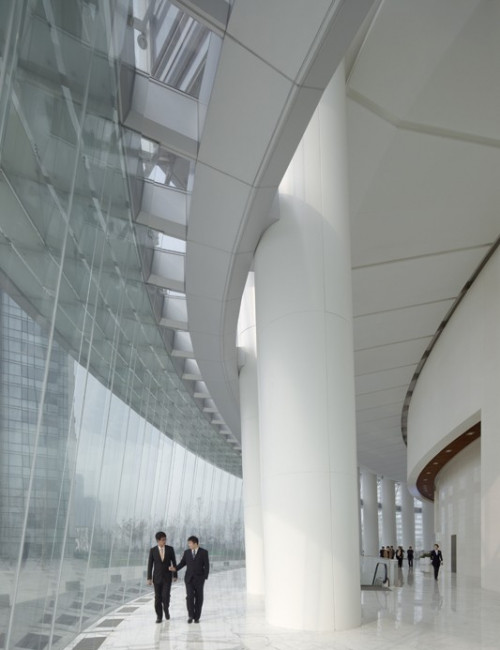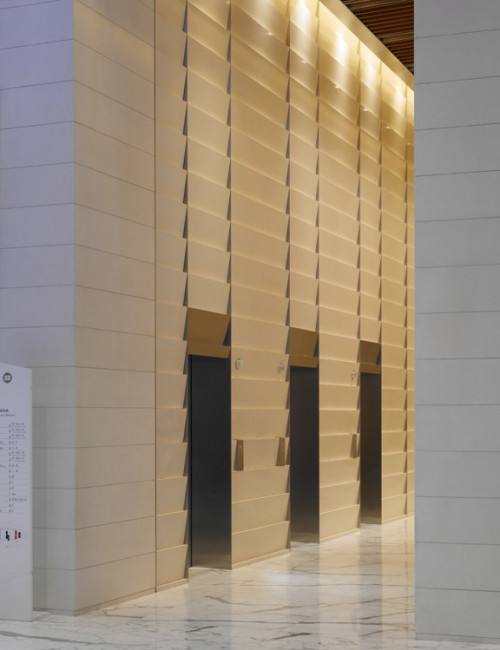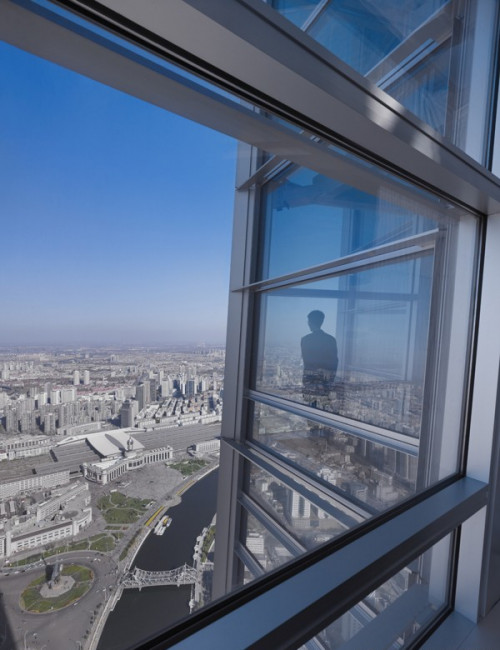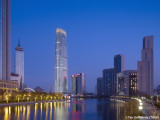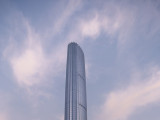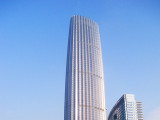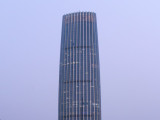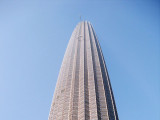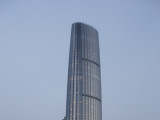Height rank
Tianjin World Financial Center
Tianjin
- CTBUH Drawing
- Facts
-
Metrics
You must be a CTBUH Member to view this resource.
To Tip:
Height is measured from the level of the lowest, significant, open-air, pedestrian entrance to the highest point of the building, irrespective of material or function of the highest element (i.e., including antennae, flagpoles, signage and other functional-technical equipment).Architectural:
Height is measured from the level of the lowest, significant, open-air, pedestrian entrance to the architectural top of the building, including spires, but not including antennae, signage, flag poles or other functional-technical equipment. This measurement is the most widely utilized and is employed to define the Council on Tall Buildings and Urban Habitat (CTBUH) rankings of the "World's Tallest Buildings."Occupied:
Height is measured from the level of the lowest, significant, open-air, pedestrian entrance to the highest occupied floor within the building.
Above Ground
The number of floors above ground should include the ground floor level and be the number of main floors above ground, including any significant mezzanine floors and major mechanical plant floors. Mechanical mezzanines should not be included if they have a significantly smaller floor area than the major floors below. Similarly, mechanical penthouses or plant rooms protruding above the general roof area should not be counted. Note: CTBUH floor counts may differ from published accounts, as it is common in some regions of the world for certain floor levels not to be included (e.g., the level 4, 14, 24, etc. in Hong Kong).Below Ground
The number of floors below ground should include all major floors located below the ground floor level.Official Name
Tianjin World Financial Center
Other Names
Tianjin Jinta Tower, Global Financial Center
Type
Building
Status
Completed
Completion
2011
Country
City
Function
A mixed-use tall building contains two or more functions (or uses), where each of the functions occupy a significant proportion of the tower's total space. Support areas such as car parks and mechanical plant space do not constitute mixed-use functions. Functions are denoted on CTBUH "Tallest Building" lists in descending order, e.g., "hotel/office" indicates hotel function above office function.
Office
Structural Material
Both the main vertical/lateral structural elements and the floor spanning systems are constructed from steel. Note that a building of steel construction with a floor system of concrete planks or concrete slab on top of steel beams is still considered an “all-steel” structure as the concrete elements are not acting as the primary structure.
All-Concrete
Both the main vertical/lateral structural elements and the floor spanning systems are constructed from concrete which has been cast in place and utilizes steel reinforcement bars and/or steel reinforced concrete which has been precast as individual components and assembled together on-site.
All-Timber
Both the main vertical/lateral structural elements and the floor spanning systems are constructed from timber. An all-timber structure may include the use of localized non-timber connections between timber elements. Note that a building of timber construction with a floor system of concrete planks or concrete slab on top of timber beams is still considered an “all-timber” structure as the concrete elements are not acting as the primary structure.
Mixed-Structure
Utilizes distinct systems (e.g. all-steel, all-concrete, all-timber), one on top of the other. For example, a Steel Over Concrete indicates an all-steel structural system located on top of an all-concrete structural system, with the opposite true of Concrete Over Steel.
Composite
A combination of materials (e.g. steel, concrete, timber) are used together in the main structural elements. Examples include buildings which utilize: steel columns with a floor system of reinforced concrete beams; a steel frame system with a concrete core; concrete-encased steel columns; concrete-filled steel tubes; etc. Where known, the CTBUH database breaks out the materials used within a composite building’s primary structural elements.
Concrete-Steel Composite
Height
336.9 m / 1,105 ft
Floors Above Ground
75
Floors Below Ground
4
# of Parking Spaces
925
# of Elevators
41
Tower GFA
203,953 m² / 2,195,332 ft²
Rankings
-
By function
You must be a CTBUH Member to view this resource.
-
By material
You must be a CTBUH Member to view this resource.
Construction Schedule
Proposed
Construction Start
Completed
Architect
Usually involved in the front end design, with a "typical" condition being that of a leadership role through either Schematic Design or Design Development, and then a monitoring role through the CD and CA phases.
Structural Engineer
The Design Engineer is usually involved in the front end design, typically taking the leadership role in the Schematic Design and Design Development, and then a monitoring role through the CD and CA phases.
MEP Engineer
The Design Engineer is usually involved in the front end design, typically taking the leadership role in the Schematic Design and Design Development, and then a monitoring role through the CD and CA phases.
Other Consultant
Other Consultant refers to other organizations which provided significant consultation services for a building project (e.g. wind consultants, environmental consultants, fire and life safety consultants, etc).
Other Consultant refers to other organizations which provided significant consultation services for a building project (e.g. wind consultants, environmental consultants, fire and life safety consultants, etc).
You must be a CTBUH Member to view this resource.
Owner/Developer
Finance Street Tianjin Real Estate Co., Ltd.
Architect
Usually involved in the front end design, with a "typical" condition being that of a leadership role through either Schematic Design or Design Development, and then a monitoring role through the CD and CA phases.
Structural Engineer
The Design Engineer is usually involved in the front end design, typically taking the leadership role in the Schematic Design and Design Development, and then a monitoring role through the CD and CA phases.
MEP Engineer
The Design Engineer is usually involved in the front end design, typically taking the leadership role in the Schematic Design and Design Development, and then a monitoring role through the CD and CA phases.
Contractor
The main contractor is the supervisory contractor of all construction work on a project, management of sub-contractors and vendors, etc. May be referred to as "Construction Manager," however, for consistency CTBUH uses the term "Main Contractor" exclusively.
China Construction First Group Construction & Development Co., Ltd.
Other Consultant
Other Consultant refers to other organizations which provided significant consultation services for a building project (e.g. wind consultants, environmental consultants, fire and life safety consultants, etc).
Other Consultant refers to other organizations which provided significant consultation services for a building project (e.g. wind consultants, environmental consultants, fire and life safety consultants, etc).
BMT Fluid Mechanics Ltd.
Material Supplier
Material Supplier refers to organizations which supplied significant systems/materials for a building project (e.g. elevator suppliers, facade suppliers, etc).
Material Supplier refers to organizations which supplied significant systems/materials for a building project (e.g. elevator suppliers, facade suppliers, etc).
Jangho Group Co., Ltd.
Beijing Fortune Lighting System Engineering Co., Ltd.
CTBUH Initiatives
Top Company Rankings: The World’s 100 Tallest Buildings
13 October 2016 - CTBUH Research
Videos

19 September 2012 | Tianjin
Considering Place in an Integrated Approach to Tall
The rapid development of Chinese cities has provided unique opportunities to create architecture that either responds to its context or, in the case of emerging...
Research
AirPanoPAID_EDIT.jpg)
17 October 2016
SOM and China: Evolving Skyscraper Design Amid Rapid Urban Growth
Scott Duncan & Yue Zhu, SOM
China’s rapid urban and economic growth has challenged designers, engineers, and planners to innovate and collaborate to meet the needs of a changing country. Skidmore,...
About Tianjin World Financial Center
The Tianjin World Financial Center in Tianjin is the iconic marker of the new Central Business District at the periphery of the historic city center. Sited in the prominent Haihe River, the building plan incorporates a riverwalk promenade, emphasizing the importance of the natural resource. Visible from all of Tianjin, the tower serves as the beginning of not only the master plan for the area, but for the modernization of the local economy and city in general.
The form of the tower was parametrically driven through the creation of a pleated paper-like façade, referencing ancient Chinese paper arts. The slightly curving folds of the tower create generous bays in the floor plates, providing a unique interior experience for the offices. In order to support this unique geometry, an innovative structural system had to be devised using steel plate shear walls, utilizing the local knowledge and labor of steel shipbuilding techniques. Hollow steel tubes were designed and filled with high-strength concrete to allow the minimum diameter columns, maintaining open spaces on the interior.
In a departure from the atypical high-rise floor plan, the tower features a slender framework that results in a height-to-width ratio of 1:8. The façade of the building is composed of a perforate series of fabricated steel panels and windows that visually obscure the tower’s otherwise curvilinear form. Like many towers that utilize a tapering profile, each floor houses a slightly different program, providing a diverse selection of office space for prospective tenants.
In a city known for its intense seasonal winds, the narrow form of the building called for careful engineering considerations. After investigating various structural solutions, the design team selected steel plate sheer walls (SPSW) as the most efficient and appropriate lateral load resisting system. As opposed to conventional sheer walls, this system is composed of large steel plate walls that are welded together and positioned between columns to counteract lateral loads, effectively transferring earthquake and wind forces down to the foundation. This system was preferred not only for its structural soundness, but for the availability of materials, as Tianjin boasts the third largest reserves of iron ore in China. Ultimately, this innovative structural system resulted in a material reduction of 20 to 25 percent over traditional steel systems.
Quick Facts
- The building has a height to width ration of 1:8.
Research
AirPanoPAID_EDIT.jpg)
17 October 2016
SOM and China: Evolving Skyscraper Design Amid Rapid Urban Growth
Scott Duncan & Yue Zhu, SOM
China’s rapid urban and economic growth has challenged designers, engineers, and planners to innovate and collaborate to meet the needs of a changing country. Skidmore,...
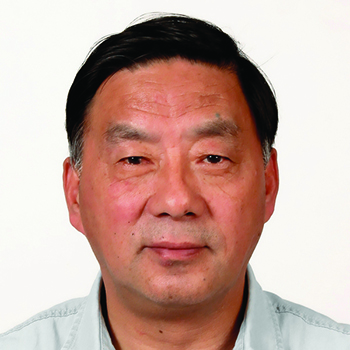
01 August 2016
Engineering China’s Skylines
Dasui Wang, East China Architectural Design Institute
Dasui Wang, China Design Master and chief structural engineer for East China Architectural Design Institute (ECADI), is the recipient of the inaugural CITAB - CTBUH...

19 September 2012
New Construction Technologies in Tianjin Jinta Mansion
Yaohui Yang, Junfeng gao & Jing Wang, China Construction First Division Group Construction & Development Co., Ltd.
The 73-story and 336.9 meter Tianjin Jinta Mansion is the tallest building in the world designed to apply concrete filled steel tube columns and pure...

31 December 2011
Year in Review: Tall Trends of 2011
Nathaniel Hollister & Antony Wood, CTBUH
The annual story is becoming a familiar one: 2007, 2008, 2009, 2010, and now 2011 have each sequentially broke the record for the most 200...

01 February 2011
World’s Tallest Steel Shear Walled Building
Mark Sarkisian & Neville Mathias, SOM; Dasui Wang, ECADI; Sam Lee, Guangzhou Scientific Computing Consultants
Because of its iconic slender form, a key design challenge was to develop an efficient lateral system capable of resisting wind and seismic lateral load;...

01 May 2010
Performance Based Seismic Design of a 75-Story Buckling Restrained Slender Steel Plate Shear Wall Tower
Sam Lee & Yun Liao, Guangzhou Scientific Computing Consultants; Dasui Wang, ECADI; Neville Mathias, SOM
The Jinta Tower is a 75-story building located in Tianjin, China, with slender steel plate shear walls (SPSW) used as the primary lateral load resisting...

01 July 2008
Steel Plate Shear Walls, Efficient Structural Solution for Slender High-rise in China
Mark Sarkisian, Neville Mathias, Eric Long & Zhihui Huang, SOM
The 329.6 meter tall 74-story Jinta Tower in Tianjin, China, is expected, when complete, to be the tallest building in the world with slender steel...
Subscribe below to receive periodic updates from CTBUH on the latest Tall Building and Urban news and CTBUH initiatives, including our monthly newsletter. Fields with a red asterisk (*) next to them are required.
View our privacy policy

